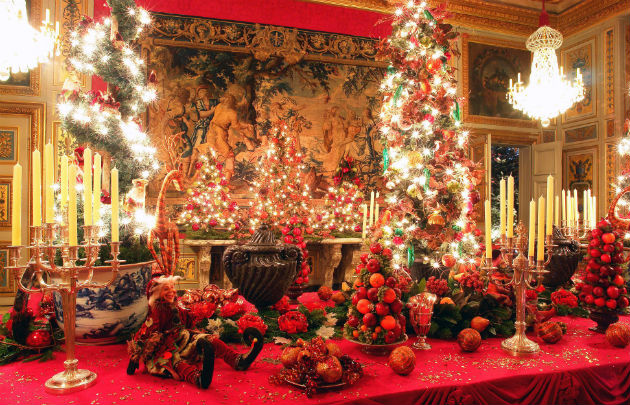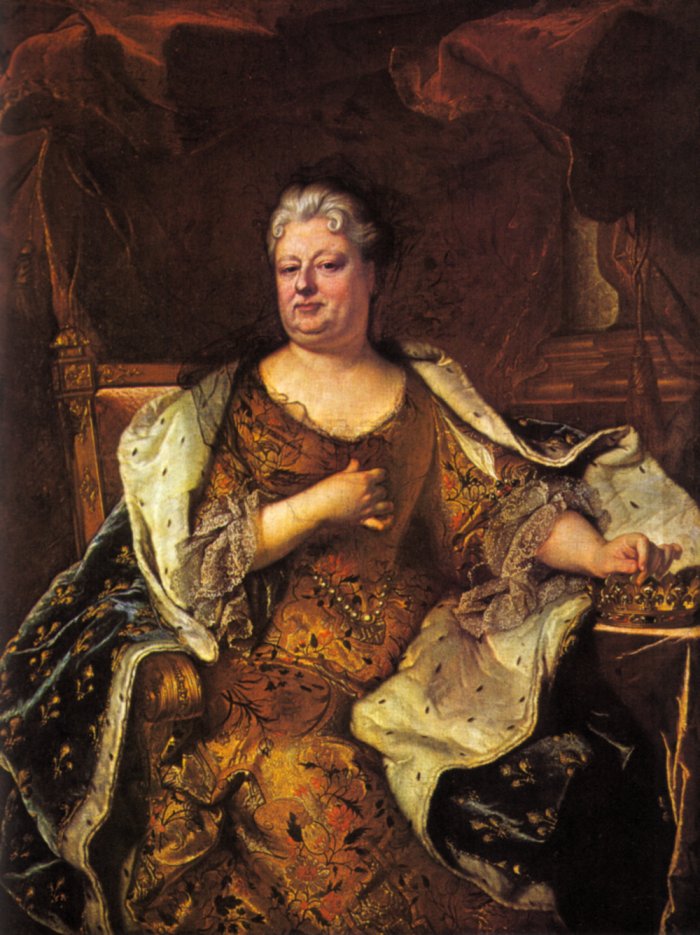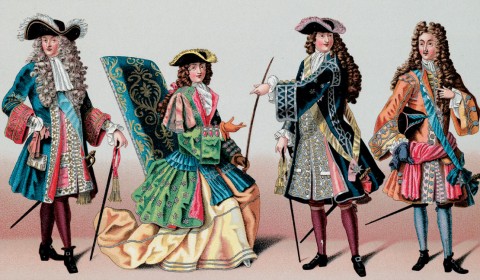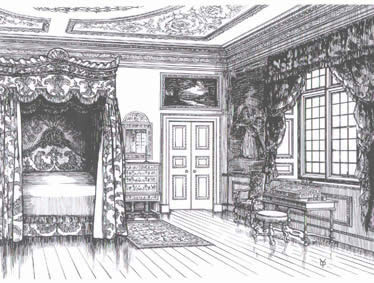A 17th century Christmas….
Christmas, as we know it now with all its tinsel and presents, did not always involve presents… and for the court of Louis XIV it was a rather dull affair mostly. Christmas meant a mass marathon for the King and his family.

The great Sun King was usually present at around four different masses on Christmas Eve alone and there was no exchanging of gifts. Christmas presents were not common, but in some parts of the world, Germany for example, it was done by families who had the means for it. Monsieur, the King’s brother, might be unintentionally to blame for the fact that this practice came to France with quite a few centuries delay.
On November 16 in 1671, Philippe de France married Élisabeth-Charlotte du Palatinat, perhaps better known under her German nickname of Liselotte von der Pfalz. It was his second marriage and his bride came, compared to the glamour of the French Court, from a different planet tradition-wise. Not only did she love Sauerkraut and had quite a big-mouth, she also tried to introduce a bit of German culture to him. Christmas trees were already part of the German culture, for those who could afford it, and also in the parts of Germany bordering France, which either belonged to France or Germany depending on the current balance of powers in Europe.
In France, the Christmas tree first appeared in Alsace in 1521 and is called sapin de noël or arbre de noël. It was in the town of Sélestat, between Colmar and Strasbourg, in which the first Christmas tree appeared. Or, at least, it was in Sélestat that a Christmas tree was mentioned for the first time in history in a record dated 21 December 1521.
A Nativity scene made of colourful clay figures was displayed in catholic households during Christmas time and some leaders of the Reformation refused to display something like that. They instead encouraged the display of a Christmas tree, because it does not depict Jesus or any other biblical characters, thus making it a bit of a protestant thing to have. Martin Luther even suggested that the Christmas tree could be a symbol of the Tree of Life in the Garden of Eden. Those trees were usually decorated with nuts, apples, paper roses, candy, if one could afford it, and quickly spread in the protestant households and protestant parts of Europe, along with the areas bordering France. In France itself, however, the new tree hype did not become a thing at all. Occasional trees could be spotted, but the catholic majority stood firm with their Nativity scenes. It stayed like this until the Franco-Prussian War of 1870-71.
Maria Leszczyńska, the Polish wife of Louis XV, tried to bring the tradition to Versailles with little success, after her Helen-Louise of Mecklenburg-Schwerin, German daughter-in-law of Louis-Philippe, tried and had not more success. In the end, while a Queen could not introduce the fashion successfully, immigrants fleeing from the regions of Lorraine and Alsace during the Franco-Prussian War made the Christmas tree a proper thing in France.

But back to Madame and Monsieur… Liselotte was rather taken with the Christmas-magic she experienced during her childhood in Hannover. The Christmas tree, the candy which was laid out on the tables decorated with branches of boxwood, and the Christmas procession, featuring a large star, which marched through the streets of Hannover, while drums and trumpets sounded and everyone sang In dulci jubilo-o-o, nun singet und seid froh-oh-oh.
In a letter to her daughter, the Duchesse de Lorraine, she describes a game that was played during Christmas in Hannover, called the Christkindl, and asks if her daughter is familiar with it. Madame describes that tables were decorated like altars for it and on each table presents were laid out for each child. Candy, dolls, new garments, ribbons… whatever the child desired. Those tables also featured boxwood trees decorated with candles. Madame then describes the last time the Christkindl came to her: A group of boys were brought in and then the Devil, the Angels and Christ and the Apostles came in. The Devil scolded the boys for all the bad they had done during the year, reading it all from a long list, after which Christ said he had come to bring them presents for their good deeds, but since they have been so naughty, he could not stay or give them anything. The Angels then talked with Christ and swore the boys would behave better in the future. Christ forgave them and they were led by the Angels and Saint Peter to the tables with the presents. “And as Saint Peter took me by the hand -it was a small schoolboy with a faux beard I saw that he had the scabies and noticed the con trick… but it still brings me joy to thing of it.”

This Christkind-gift-bringing, as it is still done in some parts of Germany today, is again a protestant thing. The Catholics had Saint Nicholas as gift bringer. Martin Luther explicitly discourages the use of the figure of Saint Nicholas and during the Protestant Reformation in 16th-17th-century Europe, many Protestants changed the gift bringer to the Christ Child or Christkindl and the date of giving gifts changed from December 6 to Christmas Eve. (Today it is kind of both, the Christkind brings the presents on Christmas or Santa does it and Saint Nicholas shows up on December 6 to leave a small present for the kids… or a piece of coal if they were naughty.)
Madame writes about the Christkindl again in January 1711 to Sophie of Hannover and tells the story of how she once tried to introduce the whole thing to France, or rather her husband, years ago. Since she loved it so much, she thought it a nice surprise for their children and also something they, like she did, could remember fondly during their adult-life and maybe could do for their children. She writes: “Here nobody knows anything about it. I tried to introduce it, but Monsieur just said vous nous voulés donner de vos modes Allemandes pour faire de la despence, je vous baisse les mains.” You only want to introduce your German fashions to spend more money, I kiss your hand.
And that was it. Madame did not try again. If Monsieur had allowed his wife to bring this tradition to court, it would have most likely been picked up by others at court, and thus would have spread far earlier than the 19th Century in France, when it actually did…. a shame, isn’t it? Instead of becoming the father of French Christmas, Monsieur was the Grinch of French Christmas.





One Comment
Tess
Monsieur definitely deserved a piece of coal for what he did :). Or a birch rod. Here in Poland Saint Nicholas gives birches to naughty children (though those small rods are usually painted gold and decorated with a ribbon, so Monsieur could even be happy about that 😉 ).